
Tuatara


For our second semester group project, we were tasked with creating a 20-second TV advertisement for a well-known brand. Our group chose National Geographic, renowned for its wildlife magazines and documentaries.
After exploring various concepts from the National Geographic perspective, we decided to focus on New Zealand's lockdown experience during COVID-19.
During task assignment, I took on the responsibility of modelling the Tuatara, a unique lizard native to New Zealand. To ensure accuracy, I extensively researched its physical characteristics on Google and created a mood board for reference.
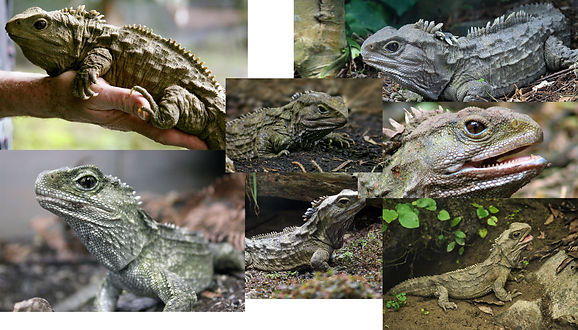
After developing a mood board, I researched modelling workflows online and came across a YouTube tutorial on creating 3D lizards that closely resembled Tuatara. Drawing from this video, I mapped out my project workflow.
Using Blender, I began by creating a basic model of the Tuatara. While the process itself wasn't overly challenging, my limited modelling skills posed some difficulties, making the task more demanding.
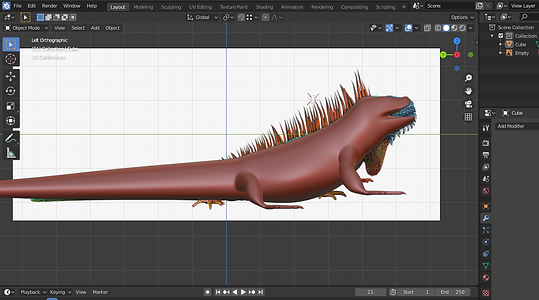
Unable to locate an orthographic picture of the Tuatara, I opted to use an orthographic picture of an iguana instead.

Sculpting with ZBrush presented the most significant challenge during the process. Prior to starting this project, I had little familiarity with ZBrush and its sculpting capabilities. To overcome this hurdle, I began by watching tutorials on YouTube to learn about the program's interface and foundational sculpting techniques required to model the Tuatara.



I consistently referenced the images of the Tuatara in the mood board while sculpting, striving to achieve an accurate likeness with each adjustment.
However, I encountered a significant challenge during the retopologizing process after completing the sculpting in ZBrush. Retopologizing involves reducing the polygon count of a model to make it suitable for animation.
Given the time-intensive nature of manual retopologizing, I sought out a new tool called ZRemesher in ZBrush, which automates the retopologizing process. Unfortunately, while this tool streamlines the workflow, it also removes some of the sculptural details, necessitating additional sculpting work to refine the model.
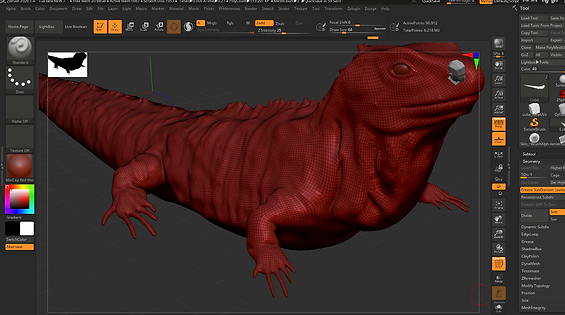
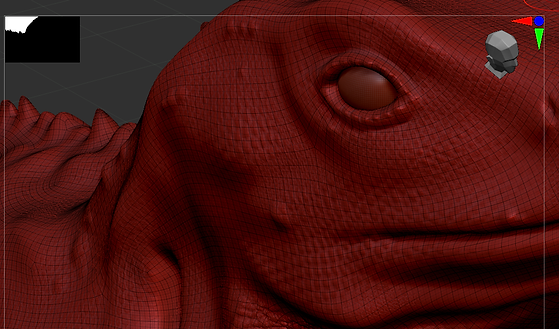
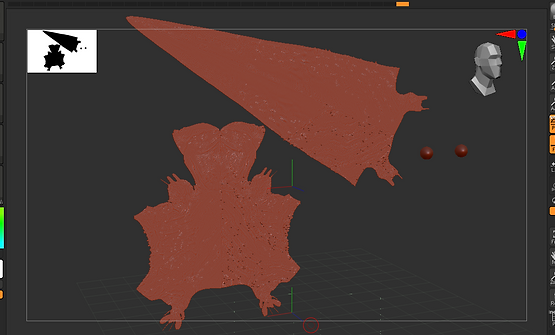
With the significant reduction in polygon count achieved using ZRemesher, I proceeded to load the model into Substance Painter to commence the colouring process after completing the sculpting.
While Substance Painter allowed me to apply colour using fill layers, I encountered difficulty painting directly onto the model using a paint layer. After several attempts, I realised that UV mapping was necessary for Substance Painter to utilise a paint layer. Subsequently, I returned to ZBrush, generated UV maps, and re-imported the model into Substance Painter.
UV baked in ZBrush


Painted Tuatara in Substance Painter
Meanwhile, I imported the low-poly model of the Tuatara into Blender. While uncertain if our group would utilize Blender for animation, I saw it as an excellent opportunity to practice, as I'm self-learning Blender. Following YouTube tutorials, I added a subdivision modifier and a displace modifier.


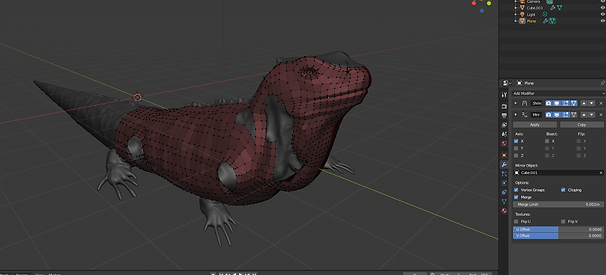
After modifiers were added
Throughout the process, I found that the ZRemeshed model had excessive polygon counts for animation, causing Blender to slow down when animating the Tuatara.
As a solution, I opted to manually retopologize the model again in Blender. However, I encountered a setback as the UV map I generated from ZBrush did not align with the updated Tuatara after retopologizing in Blender. This necessitated redoing the entire painting and UV mapping process from scratch.
Low-poly Tuatara
Retopologizing process

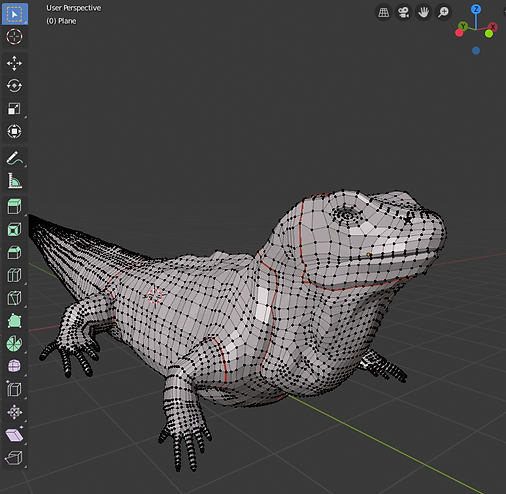
The Retopologizing process finished
After completing the retopology, I proceeded with the UV unwrap procedure in Blender. I added UV seams where necessary to ensure proper mapping of the texture.
To address texture distortion caused by UV seams, I strategically applied seams to areas not visible to the naked eye.
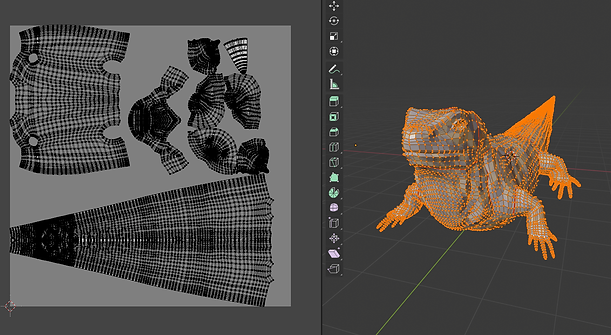
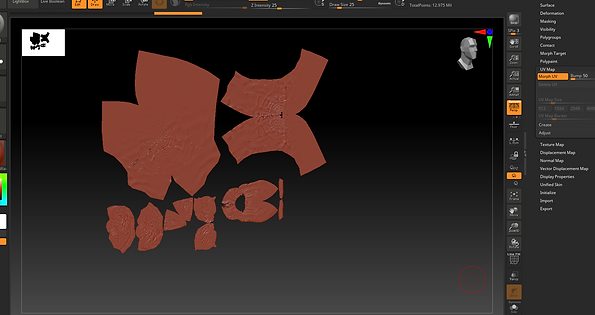
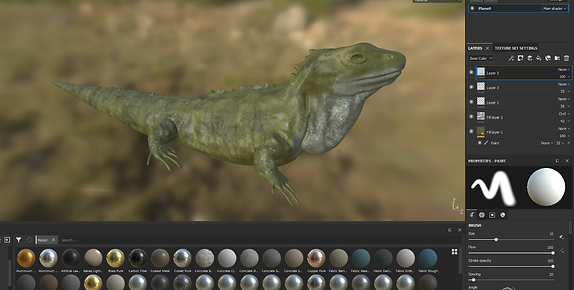
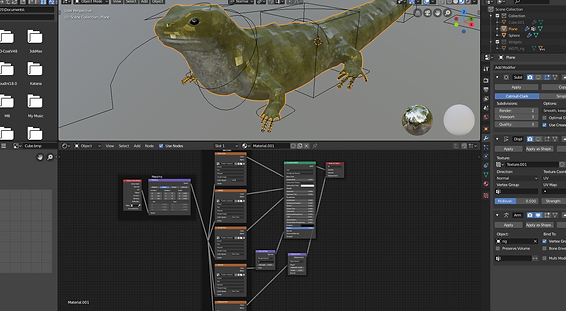
After completing the retopology of the Tuatara in Blender, I exported it and imported it into ZBrush. From there, I projected features from the high-resolution Tuatara onto the retopologized model, resulting in a new displacement map with a new UV.
Additionally, I decimated the retopologized Tuatara and exported it into Substance Painter for further painting.
I generated a new texture for the Tuatara, ensuring that the model and texture skin shared the same UV layout. Additionally, I continued studying Substance Painter while working on other projects.
Next, I exported the texture file from Substance Painter and imported it into Blender. I utilized a Blender add-on to organize and apply the materials.



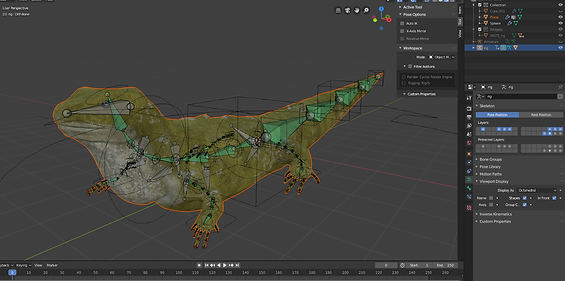
I completed the texturing and retopology of the Tuatara before starting the rigging process for motion. The most challenging aspect I encountered during this project was rigging. I created the Tuatara's internal armatures and assigned bone types based on the functions of each individual bone.
Subsequently, I painted the weight for each bone to define the limits of skin mobility.
I created rigs from armatures and then parented them to the Tuatara once I had finished weight painting.
Due to my lack of understanding, I had to repeat the same procedure multiple times while creating the Tuatara for this project.
However, through this process, I gained valuable experience with various software and learned exciting techniques that will benefit my future career.